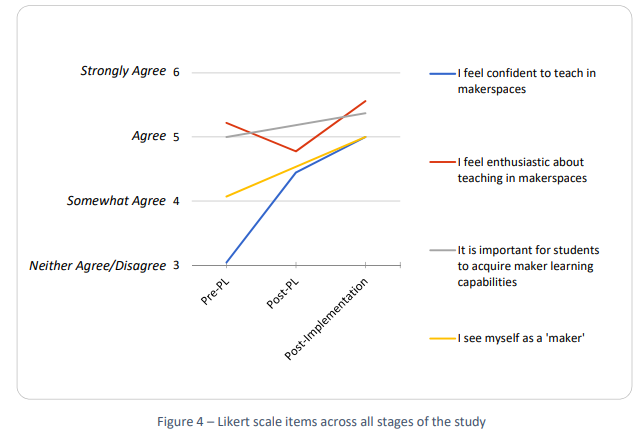Researchers at Macquarie University in Sydney, Australia, have conducted a year-long study into the benefits of 3D printing and 3D design in primary school makerspaces.
While the study maintains that there is much work yet to be done to help support teachers and pupils integrate 3D printing into schools, the preliminary findings prove promising.
Makerspaces in Primary School Settings
For the purpose of the Macquarie University research, 27 teachers from three schools in Australia completed the Makers Empire Learning by Design professional development course. Following that, the teachers then collectively taught 24 classes in 3D printing and design, using Makers Empire 3D software, to an accumulated total of over 500 students.
Opinions and observations of staff were recorded before, during and after implementation of the course and lesson plans, along with the apparent impact on students in and outside of class.
The so-titled “Makerspaces in Primary School Settings” study was funded by the New South Wales Department of Education, an AusIndustry Innovation Connections grant, part of the National Innovation and Science Agenda, and 3D printing education and software provider Makers Empire, headquartered in Adelaide.
It was co-authored by Associate Professor Matt Bower, Dr. Michael Stevenson, Professor Garry Falloon, Dr. Anne Forbes and Dr. Maria Hatzigianni each with respective experience in early childhood studies, education, and Science, Technology, Engineering, Mathematics (STEM) practices.

Impact on students and teachers
According to a quantitative analysis of terms discussed in teacher feedback, 100% (31 out of 31) of 3D printing and modeling lessons had high levels of student engagement. In addition, creativity (recorded with a 71% frequency in responses) and design thinking (recorded at 64.5% frequency) were the top two skills demonstrated by students throughout the study.
A further, unanticipated, outcome was an increase in collaboration between teachers and technology, including a willingness by some to introduce similar pedagogies across other lessons. “Several teachers indicated that they had shifted to be more collaborative, flexible, and comfortable with technology,” state the authors, adding, “Many teachers entered learning partnerships with students, and as a result, students came to see their teachers as models of lifelong learning,”
Further, “Some teachers related how these changes had transcended beyond their makerspaces modules – for instance, in the form of more inquiry-based, problem-based, and collaborative units of work.”
The Likert scale below demonstrates the teacher’s attitudes toward the idea of makerspace before training, post training, and post implementation of the learning outcomes in lessons.

Recommendations for the future of 3D printing in schools
Following the results a series of “future considerations” are made by the researchers, taking into account the feedback of the teacher focus group.
The points made in this summary urge schools to support both their students and teachers with the time and qualifications where necessary to implement 3D printing and 3D design in lessons.
The researchers also assert that further research is required “to determine effective systems through which makerspace leadership capabilities can be developed and propagated within and between schools.”
For 3D printing research related to education, aerospace, material and more subscribe to the 3D Printing Industry newsletter, follow us on Twitter, and like us on Facebook.
Looking for a new job? Search open opportunities and apply for 3D Printing Jobs. Employers can also make a free profile to advertise your latest vacancies.
Featured image shows primary school pupils working with 3D printed objects. Photo via Makers Empire



